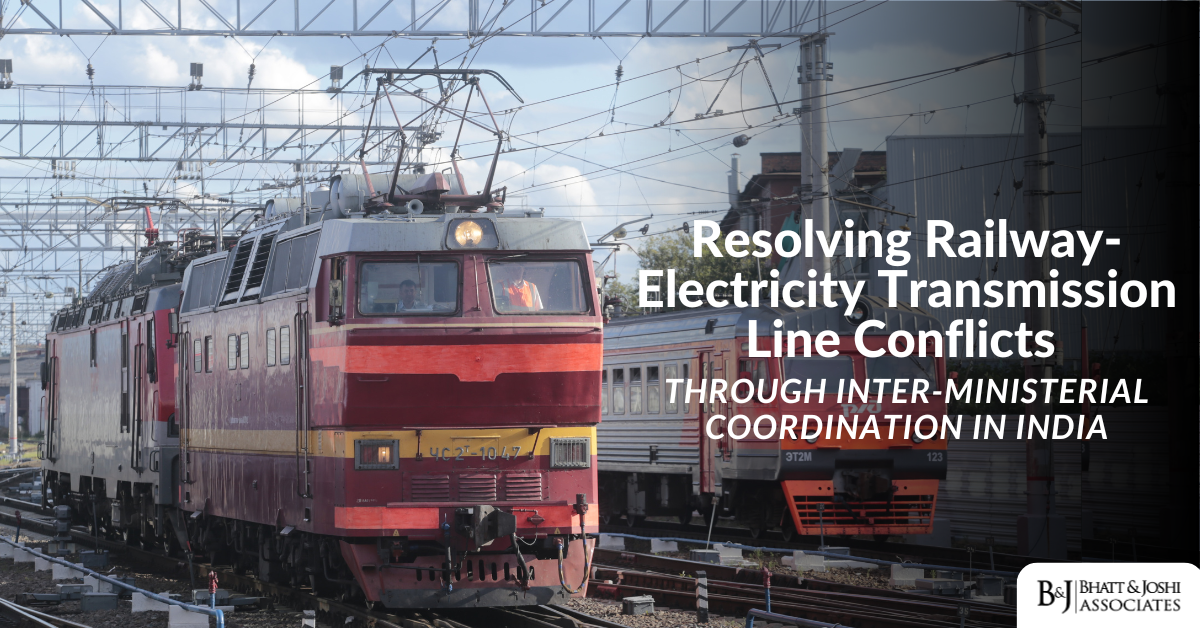Introduction
India’s infrastructure development often involves complex intersections between railway projects and electricity transmission networks, requiring robust inter-ministerial coordination to resolve railway-power transmission conflicts effectively. When railway electrification or expansion projects clash with existing or planned power transmission lines, the resolution process demands structured mechanisms to balance technical, environmental, and operational priorities. This report examines the institutional frameworks, procedural pathways, and best practices for resolving such disputes, drawing on India’s evolving governance architecture for cross-sectoral coordination.
Institutional Mechanisms for Railway-Power Conflict Resolution
The PRAGATI Platform: High-Level Intervention for Stalled Projects
The PRAGATI (Pro-Active Governance and Timely Implementation) platform, chaired by the Prime Minister, has emerged as a critical tool for resolving inter-ministerial bottlenecks. For instance, during the Mumbai-Ahmedabad bullet train project, PRAGATI facilitated real-time negotiations between the Railways and Environment Ministry over land acquisition delays. In cases where transmission lines obstruct railway routes, stakeholders can escalate the issue to PRAGATI meetings, which mandate time-bound resolutions through:
- Multi-ministerial video conferences integrating technical teams from Railways, Power, and Environment ministries.
- Geo-spatial analysis to map conflicting infrastructure and propose rerouting alternatives.
- Accountability mechanisms that assign clear deadlines to ministries for revising project designs or securing clearances.
A 2024 Oxford University study noted that PRAGATI has resolved 85% of infrastructure disputes within six months of escalation, making it ideal for urgent railway-power line conflicts.
Power, Telecom, and Railways Coordination Committee (PTCC)
The PTCC, established under the Central Electricity Authority (CEA), provides a specialized framework for resolving technical conflicts between power transmission lines and railway infrastructure. Key provisions include:
- Mutual Coupling Calculations: PTCC guidelines (2020) mandate joint surveys to measure electromagnetic interference between transmission lines and railway signaling systems.
- Safety Clearances: The committee enforces minimum vertical and horizontal distances between transmission lines and railway tracks, typically 15 meters for 400 kV lines and 9 meters for 220 kV lines.
- Underground Cable Protocols: In densely populated areas, PTCC recommends burying transmission cables at depths exceeding 2 meters to avoid conflicts with railway electrification infrastructure.
For example, during the electrification of the Howrah-Bardhaman line, PTCC-mediated rerouting of 220 kV lines avoided interference with the Eastern Railway’s signaling systems.
Inter-Ministerial Coordination and Monitoring Committee
The Ministry of Environment, Forest, and Climate Change (MoEFCC) chairs this committee, which includes Joint Secretary-level representatives from Railways, Power, and Coal ministries. It addresses conflicts arising from:
- Forest Clearances: Disputes over transmission lines passing through reserved forests along railway routes, as seen in the Lumding-Badarpur electrification project.
- Land Acquisition: Mediating compensation disputes between Power Grid Corporation and Railway Land Development Authority.
- Wildlife Corridors: Resolving alignment conflicts in ecologically sensitive zones like the Western Ghats, where transmission lines and railway tracks intersect.
The committee meets monthly, with decisions binding on all parties under Section 3(3) of the Environment Protection Act, 1986.
Steps to Resolve Railway-Power Transmission Conflicts
Step 1: Technical Review by Zonal Committees
Each railway zone has a Joint Venture (JV) Committee comprising officials from Railways, State Transmission Utilities (STUs), and State Electricity Boards (SEBs). These committees:
- Conduct joint inspections using LiDAR surveys to map conflicts.
- Propose engineering solutions (e.g., raising transmission towers, lowering railway embankments).
- Estimate cost-sharing ratios, typically 50:50 between Railways and Power Ministry under the 2017 JV policy.
For example, the South Central Railway resolved 23 conflicts with Telangana Transco in 2023 by adjusting tower heights along the Secunderabad-Kazipet line.
Step 2: Arbitration Through Independent Engineers
Modeled after the Hydro Power Dispute Avoidance Mechanism, an Independent Engineer (IE) can be appointed to mediate technical disagreements. The IE, selected from a panel of CEA-approved experts, has authority to:
- Order provisional rerouting of transmission lines or railway tracks.
- Impose penalties (up to 0.5% of project cost per day) for non-compliance.
- Validate safety protocols using simulation tools like ETAP or CYME.
In the Delhi-Meerut RRTS project, an IE resolved an 18-month stalemate over 400 kV lines by recommending underground cabling beneath the railway corridor.
Step 3: Escalation to Regulatory Commissions
If bilateral negotiations fail, parties can approach:
- Central Electricity Regulatory Commission (CERC): For interstate conflicts, under Section 79(1)(f) of the Electricity Act, 2003.
- Railway Claims Tribunal: For compensation disputes under Section 13 of the Railways Act, 1989.
In Rail Vikas Nigam Ltd vs. GETCO (2019), CERC ordered Gujarat Energy Transmission Corporation to bear 70% of the cost for relocating 132 kV lines obstructing the Ahmedabad-Botad gauge conversion.
Case Study: Konkan Railway-EHV Transmission Line Conflict
Background
In 2022, the Konkan Railway’s electrification of the Roha-Madgaon line clashed with Power Grid’s 765 kV Sholapur-Mangaluru transmission corridor. The conflict involved:
- 12 overlapping sections where transmission towers encroached on railway land.
- Risks of electromagnetic interference with ERPC signaling systems.
Resolution Process
- Zonal Committee Intervention: A joint team from Central Railway and Maharashtra STU proposed raising 18 transmission towers by 8 meters, costing ₹42 crore (shared 50:50).
- PTCC Review: Validated mutual coupling levels using IEC 60909 standards, mandating shielding devices on railway OHE.
- PRAGATI Escalation: The Prime Minister’s Office enforced a 90-day deadline for tower modifications, avoiding project delays.
Recommendations for Strengthening Coordination
- Unified Geospatial Portal: Integrate GIS data from Railways (CORE) and Power Grid (PGCIL) into a National Infrastructure Mapping System, flagging conflicts at the planning stage.
- Standardized Cost-Sharing Formula: Adopt the 75:25 model used in Japan, where the party requiring design changes bears 75% of relocation costs.
- Hybrid Dispute Resolution: Combine IE-mediated technical arbitration with CERC’s legal oversight to ensure enforceability.
Conclusion
Railway-power transmission conflicts in India require a layered approach, blending technical committees like PTCC, high-level platforms like PRAGATI, and regulatory oversight. The emphasis must shift from reactive dispute resolution to proactive conflict prevention through integrated planning and digital tools. By institutionalizing joint survey protocols and cost-sharing mechanisms, India can emulate global best practices while tailoring solutions to its unique infrastructural landscape.











